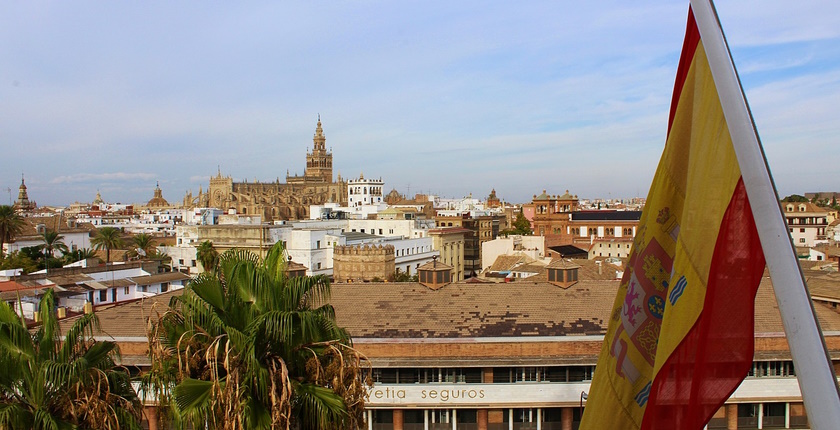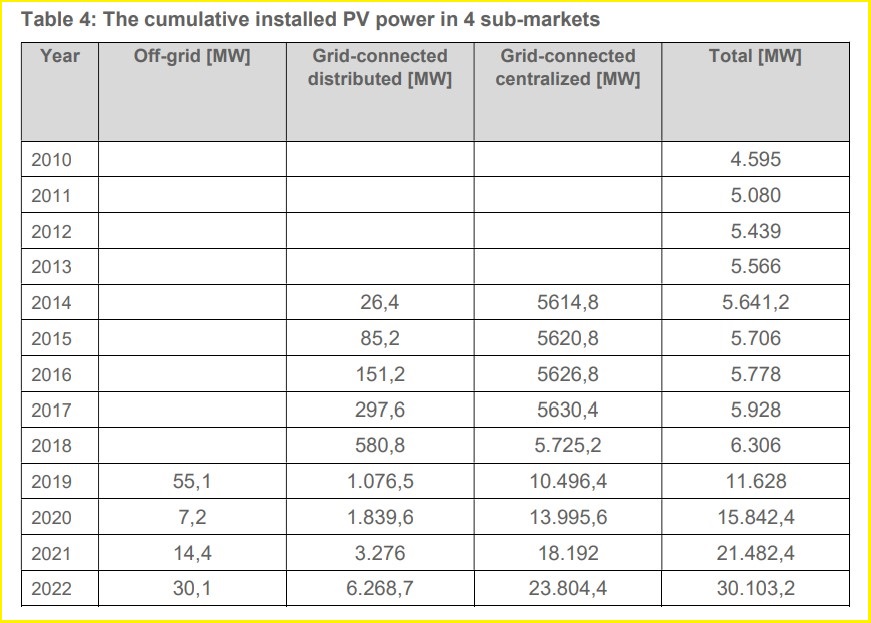
Seville (photo: Julian Hacker from Pixabay)
In 2022 Spain recorded its highest annual additions of photovoltaic power plants, making it the largest photovoltaic market in Europe and the fifth largest in the world in terms of new installed capacity. And it doesn’t end there – the country now intends to almost double its 2030 PV target.
Spain installed 8,620 MWdc of new solar photovoltaic capacity in 2022. The self-consumption segment increased by 108%, or 3,008 MWdc, while the capacity of new ground-mounted plants totaled 5,612 MWdc.
The vast majority of this new capacity was introduced without any type of aid or regulatory remuneration scheme, according to the National Survey Report of PV Power Applications in Spain 2022.
The total installed capacity of utility-scale solar power plants reached 23,804 MWdc, while the capacity of the self-consumption sector topped 6,268 MWdc.
The installations were driven by high spot market prices, combined with auctions and efforts to ensure energy independence
The industrial sector accounted for 47% of the new self-consumption capacity, followed by the residential sector (32%), while the commercial sector accounted for 20% of new installations. The report estimates that 1% of the self-consumption installations are off-grid.
The installations were driven by the high spot market prices, together with the search for energy sovereignty and the auctions held in previous years, the report reads.
According to Spanish designated market operator OMIE, average daily wholesale market prices stood at EUR 168 MWh, reaching a maximum of EUR 700 MWh, which has been cushioned by the introduction of the gas cap.
Over the last five years, Spain has increased its capacity exponentially, adding more than 24,175 MWdc to the grid. Since 2019 the accumulated capacity increased from 6,306 MW in 2018 to 30,103.2 MW in 2022.

No subsidies were needed for large projects
The report underlines that all large-scale solar capacity commissioned during 2020 (3.5 GW), 2021 (4.3 GW), and 2022 (5.3 GW) was developed without any type of public aid. The capacity was developed mostly through power purchase agreements (PPAs), auctions, or merchant projects.
“For the fourth consecutive year, in 2022 Spain was the most active renewable PPA market in Europe, both in terms of volume contracted and number of agreements signed. According to multiple reports, during 2022 Spain closed more than 3.2 GW of renewable energy through PPAs, where PV has occupied the largest share of the market,” according to a report by International Energy Agency (IEA).
The self-consumption sector, however, enjoys a set of support measures.
2030 PV target to be updated in revised NECP
In June the Spanish government presented a proposal to set new renewable objectives for 2030 under a revised national energy and climate plan (NECP).
According to the report, the 2030 target update, which is currently under consultation, indicates that the PV target will be increased from 39 GW to 76 GW, of which 57 GW is for ground-mounted plants, and the remaining 19 GW for self-consumption installations.
The expected changes in the European energy market design will have a direct impact on the Spanish market.
The reforms are likely to come hand in hand with the strengthening of forward contracts such as PPAs, and changes in renewable auction designs, while the government is also expected to play a more active role in ensuring that PPAs are more accessible, the report reads.


















Be the first one to comment on this article.